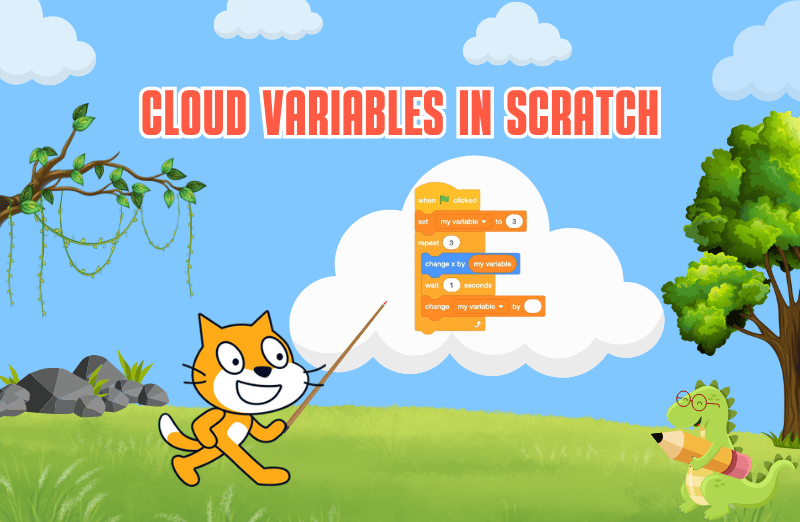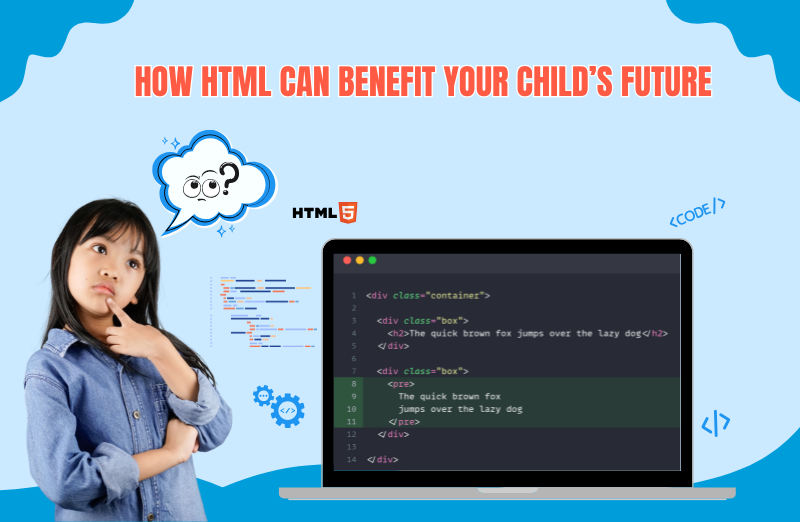Introduction: Turning Words into Worlds
Every child has a story to tell, a world of imagine, a hero to create, a mystery to solve. Now, with the help of AI tools and smart prompts, kids can turn their imagination into interactive stories and quizzes that respond, adapt, and come alive.
Welcome to a new era of creativity, where words become code, questions spark curiosity, and AI becomes a storytelling partner.
Whether your child loves writing, gaming, or coding, learning to craft interactive prompts is the perfect way to blend imagination with innovation.
1. What Are Prompts and Why Do They Matter?
A prompt is simply a question, instruction, or idea you give to an AI tool to get a meaningful output. Think of it as giving directions to a creative assistant. The better you guide it, the better the result you get.
For example:
🧠 “Write a story about a robot who learns to dance.”
💬 AI Response: A fun, rhythmic tale full of creativity and humor.
With the right prompt, kids can make AI generate:
- 📖 Stories with characters, dialogues, and twists.
- 🧩 Quizzes with questions, hints, and answers.
- 🎮 Interactive experiences that adapt based on user choices.
In short, prompts turn children from passive readers into active creators.
2. Why Use Prompts to Create Stories and Quizzes?
Prompts help kids go beyond consuming content — they learn to design, experiment, and express ideas. Here’s why this approach works wonders for young learners:
✨ a) Sparks Creativity
Instead of staring at a blank page, a single well-crafted prompt gets their imagination flowing. They learn to think like writers and experiment like coders.
💬 b) Builds Communication Skills
Creating prompts teaches kids to write clear, concise, and expressive instructions — a valuable life skill.
⚙️ c) Encourages Logical Thinking
Interactive quizzes and story branches require kids to think about cause and effect, conditions, and choices, building their computational thinking.
🧠 d) Enhances Learning Through Play
When kids build quizzes or stories around what they’ve learned — from math facts to history lessons — they reinforce knowledge in fun, meaningful ways.
3. Getting Started: How Kids Can Create with Prompts
Kids can begin creating with prompts using free AI tools like:
- 🗨️ ChatGPT or Gemini (for text-based stories and quizzes)
- 🎨 DALL·E or Bing Image Creator (for illustrations)
- 💻 MIT App Inventor, Scratch, or Code.org (for turning ideas into interactive games)
Encourage them to start small with one prompt, one idea, and then expand as they gain confidence.
Here’s a simple structure for a story prompt:
“Write a story for 8-year-olds about a brave fox who explores a hidden forest. Let readers choose between two paths at the end of each paragraph.”
And for a quiz prompt:
“Create a 5-question quiz about space for 10-year-olds. Include multiple-choice answers and fun feedback for each question.”
4. Fun Prompt Ideas to Try with Kids
Here are some themed prompt examples you can use to help kids make interactive stories and quizzes that blend creativity and learning.
A. Interactive Story Prompts
🦸♀️ Superhero Story Generator
“Write a story about a kid who wakes up with a superpower every morning. Let the reader choose which power to use: flying, invisibility, or talking to animals.”
🧩 Variation: Add a twist — “If the reader picks ‘flying,’ show how the power helps someone else.”
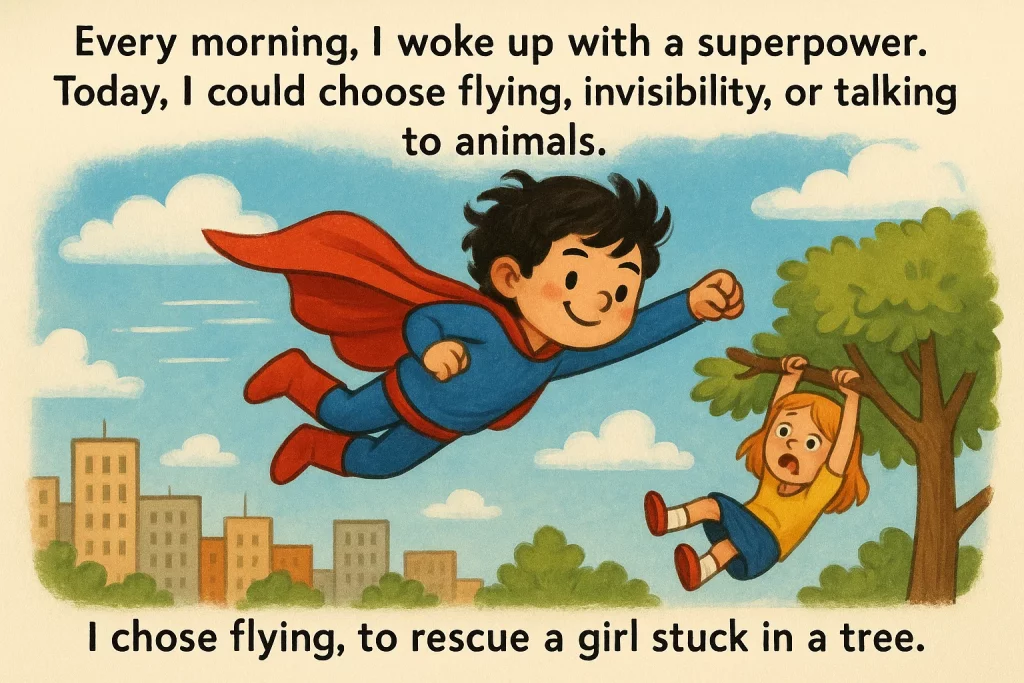
🧙♂️ Mystery Maker
“Create a detective story for kids where the reader helps solve clues. At the end of each clue, let them choose between two suspects.”
💡 Learning Tip: This builds deductive reasoning and reading comprehension.
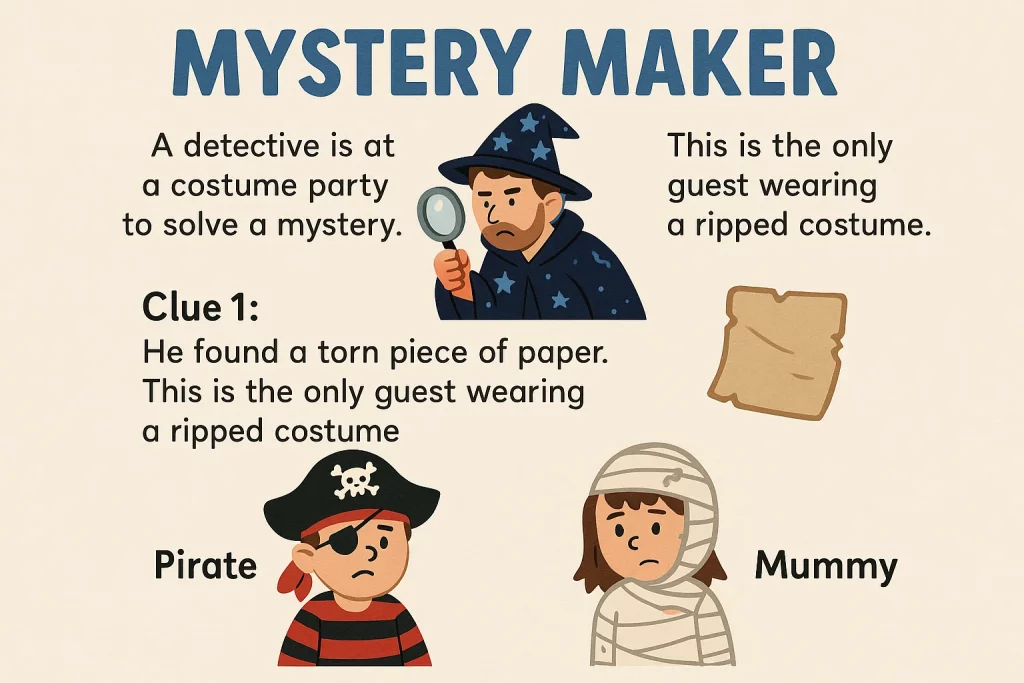
🦄 Fantasy World Builder
“Write a story about a magical land full of friendly dragons, floating islands, and hidden treasures. Ask the reader what they want to explore first.”
🎨 Extension: Use AI image tools to illustrate the magical scenes kids create.

🌍 Eco Adventure
“Make a story about kids who plant trees around the world. Let the reader decide which country they visit next and what challenges they face.”
🌱 Learning Outcome: Promotes environmental awareness through interactive storytelling.
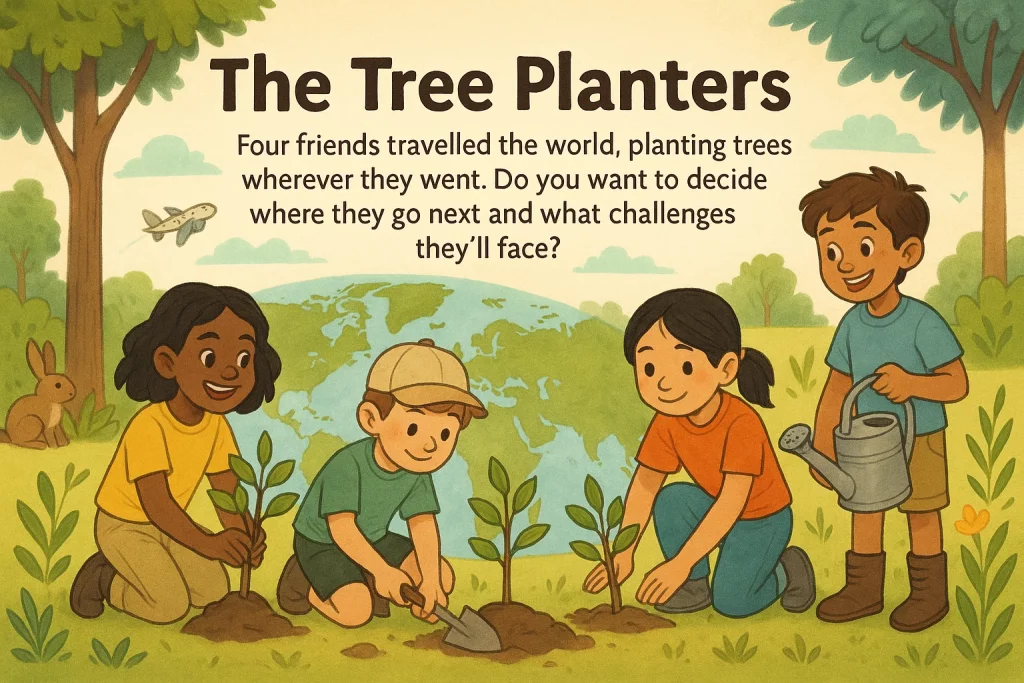
B. Interactive Quiz Prompts
🚀 Space Quiz
“Create a 5-question multiple-choice quiz about planets for 9-year-olds. For each wrong answer, give a fun fact that helps them learn.”
🎯 Extension: Use Scratch to make it an animated quiz game.
🧮 Math Mission
“Write a 7-question math quiz where players must solve problems to help a robot reach home. Include hints and encouraging feedback.”
⚙️ Learning Outcome: Makes problem-solving playful and engaging.
🦕 Dino Discovery
“Create a quiz about dinosaurs with true or false questions. Add sound effects or animations for correct answers.”
🎮 Extension: Convert it into a Scratch project where kids ‘earn’ dino fossils with correct answers.
🌈 Emotion Explorer
“Make a quiz where each question helps kids recognize emotions. Give supportive messages like ‘That’s okay!’ or ‘Great empathy!’ after each answer.”
💖 Learning Outcome: Builds emotional intelligence and positive self-awareness.
5. Designing Interactive Experiences: Step-by-Step Guide
Once kids have their AI-generated content, they can make it interactive with simple tools.
Step 1: Write Prompts in AI
Ask AI to generate the story or quiz using the examples above. Encourage your child to refine prompts — the more specific, the better.
Step 2: Review and Edit Together
Discuss which parts feel exciting or confusing. This teaches editing and critical thinking.
Step 3: Bring It to Life
Import the story or quiz into a coding platform:
- Scratch for animations and character interactions
- MIT App Inventor to turn it into a mobile quiz app
- Code.org Game Lab for story-based games with buttons and dialogue choices
Step 4: Add Art and Audio
Use AI art prompts to generate images like:
“A cheerful fox wearing a detective hat.”
Or record custom voices to make the experience more personal.
Step 5: Share and Celebrate
Let kids share their projects with family and friends. Appreciation builds confidence and encourages more creative experimentation.
6. Learning Benefits of Making Stories and Quizzes
Creating interactive stories and quizzes using prompts helps kids:
- 🧠 Strengthen reading comprehension and language skills.
- 🧩 Practice logical sequencing and cause-effect thinking.
- 🎨 Boost creativity and design thinking.
- 🤝 Build collaboration and presentation confidence.
- 💬 Learn how to communicate with technology effectively.
They don’t just learn about AI — they learn with it.
7. Tips for Parents and Teachers
- Encourage exploration, not perfection — every mistake is a learning moment.
- Discuss how AI tools work and why prompts matter.
- Celebrate creativity — whether the result is silly, serious, or surprising.
- Set clear guidelines for ethical use — give credit, avoid copying, and respect digital boundaries.
By creating together, you turn screen time into bonding time and creativity into connection.
People Also Read: Prompt Engineering Challenges for Kids to Explore AI
How Codingal Helps Kids Turn Prompts into Projects
At Codingal, we believe the future belongs to creative thinkers who can use technology to tell stories, solve problems, and inspire others. That’s why our AI and coding courses help kids go beyond typing code — they learn to think, imagine, and innovate.
In our live, expert-led classes, students:
- 🧠 Learn prompt engineering to communicate with AI.
- ✨ Create interactive stories, quizzes, and chatbots using tools like Teachable Machine, Scratch, and Python.
- 🎨 Use AI art and storytelling to build personalized digital projects.
- 🌍 Receive STEM.org accredited certificates recognizing their creativity and skill.
With Codingal, kids don’t just learn to code — they learn to create experiences that inspire others. We help them move from asking questions to building answers.
🚀 Start your child’s AI & Coding journey today! Book a free trial class at Codingal and watch them turn prompts into powerful, interactive creations.
Conclusion: From Prompts to Possibilities
Prompts are like seeds — when kids plant them in the soil of imagination, they grow into stories, quizzes, games, and worlds that amaze us. By learning to guide AI with creativity and clarity, children become more than consumers of technology — they become storytellers, designers, and inventors of the future.
Through interactive storytelling and quizzes, they not only learn coding and AI but also discover the joy of expressing themselves through creation.
Because when kids learn to use prompts wisely, they don’t just make the AI talk — they make it think, imagine, and inspire right alongside them.








